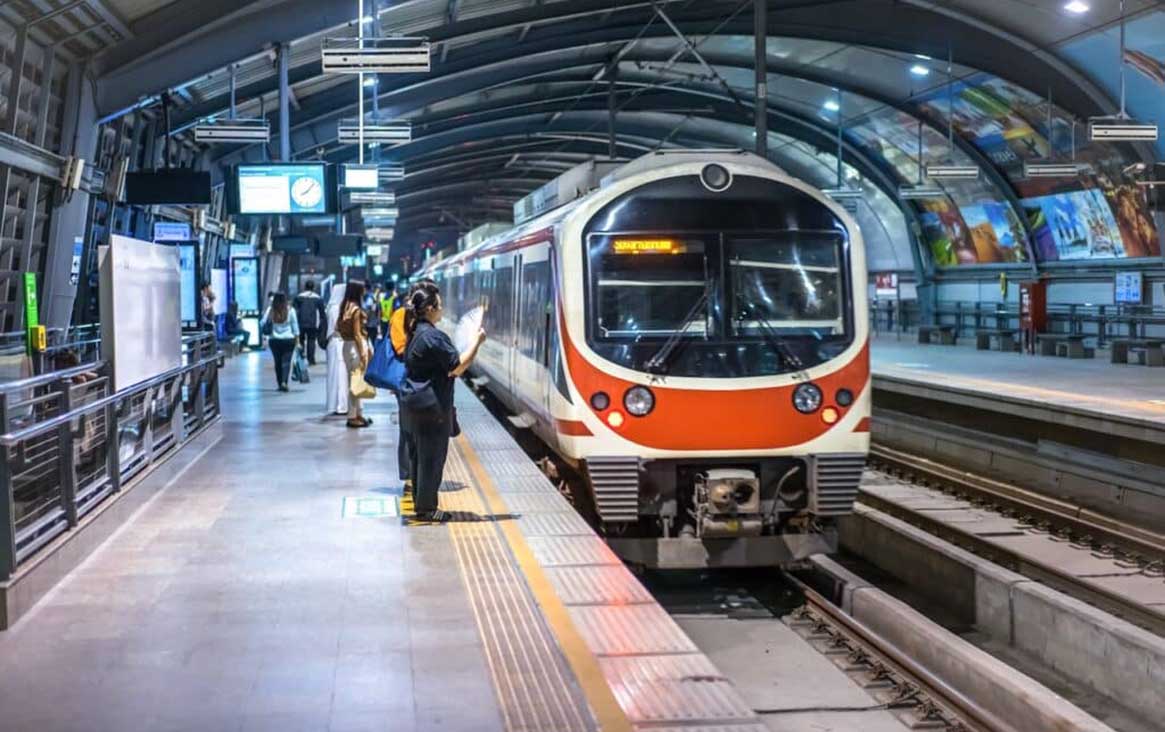Traveling to and from Salt Lake City begins with one crucial step: navigating the city’s airport. Salt Lake City International Airport (SLC) is a modern hub that connects travelers to destinations across the United States and beyond. While it may not be as massive as airports in Los Angeles or New York, SLC offers a wide range of transportation options that make getting into the city—or heading out to nearby attractions—efficient, convenient, and affordable. Understanding these options in advance can save you time, money, and stress, ensuring a smooth start or end to your trip.
Whether you are a first-time visitor, a business traveler, or an adventurer planning to explore the nearby mountains, this comprehensive guide will walk you through every airport transportation option, from public transit to private shuttles, taxis, rideshares, car rentals, and more.
1. Salt Lake City International Airport Overview
Salt Lake City International Airport is located just under five miles west of downtown Salt Lake City, making it one of the most accessible airports in the U.S. The airport has recently undergone major renovations, modernizing terminals, adding new amenities, and streamlining passenger flow. With two main terminals—Terminal 1 and Terminal 2—travelers can expect a clear layout, modern facilities, and plenty of options for dining and shopping.
Because the airport is relatively close to the city center, traveling into downtown or to surrounding neighborhoods can be done quickly, even during peak travel times. Depending on your preference, you can choose between cost-effective public transit, convenient rideshares, reliable taxis, or a private shuttle service.

2. Public Transportation Options
TRAX Light Rail
The TRAX light rail system is one of the most affordable ways to get from SLC into downtown Salt Lake City. The Green Line directly connects the airport terminals to key downtown stations in under 20 minutes, making it an ideal option for travelers looking to avoid traffic and save money.
- Cost: A single ride typically costs around $2.50
- Schedule: Trains run frequently throughout the day, with slightly reduced service during late-night hours
- Pros: Affordable, predictable, environmentally friendly
- Cons: Limited luggage space, can be crowded during peak times
The light rail is also convenient for reaching locations beyond downtown, including the University of Utah area, Temple Square, and several residential neighborhoods.
Bus Services
Several bus lines serve the airport, connecting travelers to various parts of Salt Lake City and surrounding suburbs. While buses are less direct than TRAX, they provide a low-cost alternative, especially for those heading outside the downtown core.
- Pros: Very inexpensive, extensive coverage
- Cons: Slower than light rail or rideshare, requires navigating schedules and stops
3. Taxi Services
Taxis remain a reliable choice for travelers who prefer a more direct, door-to-door experience. Taxi stands are located outside the baggage claim areas of both terminals. Licensed drivers can take passengers anywhere in the Salt Lake City metropolitan area.
- Average Cost to Downtown: $20–$30, depending on traffic
- Pros: Direct, available 24/7, accommodates luggage easily
- Cons: More expensive than public transit, fares can fluctuate slightly based on demand and traffic conditions
Taxis are particularly convenient for travelers with tight schedules or those arriving late at night when other transportation options may be less frequent.
4. Rideshare Options
Ridesharing apps like Uber and Lyft have become increasingly popular at SLC. Designated pickup areas are clearly marked outside both terminals, making it easy to find your driver without confusion.
- Cost: Varies by distance, demand, and vehicle type; typically $15–$35 to downtown
- Pros: Convenient, app-based payment, multiple vehicle options (including XL for larger groups or luggage)
- Cons: Surge pricing during peak hours or events can increase costs
- Tips: Always confirm the vehicle make and license plate to ensure safety, and check app notifications for any temporary pickup changes
For travelers heading to nearby ski resorts or mountain destinations, rideshare can offer flexibility without the need to navigate rental car logistics, though costs will be higher for longer trips.
5. Airport Shuttle Services
For those seeking a middle ground between taxis and public transit, private airport shuttles are an excellent option. Many hotels in Salt Lake City offer complimentary shuttle service, while third-party shuttle companies provide transport to downtown hotels, ski resorts, and other nearby attractions.
- Hotel Shuttles: Many downtown hotels run 24/7 airport shuttles, often requiring advance reservation. Check your hotel’s website or call ahead to secure a spot.
- Third-Party Shuttles: Companies like Salt Lake Express and All Resort Express provide scheduled services to both city and mountain destinations.
- Pros: Can be pre-booked, comfortable, luggage-friendly
- Cons: Less flexible than taxis or rideshare, may involve wait times or multiple stops
For travelers heading directly to ski resorts or outlying destinations, airport shuttles are particularly popular. They often include convenient storage for skis, snowboards, and large luggage.
6. Rental Cars
Salt Lake City is surrounded by natural attractions, ski resorts, and scenic drives, making rental cars a popular choice for visitors who want full freedom and flexibility. The airport houses a consolidated car rental center with major providers, including Enterprise, Hertz, Avis, Budget, and National.
- Pros: Complete freedom to explore the city and surrounding areas, perfect for multi-destination trips
- Cons: Parking fees in downtown areas, winter weather conditions in the mountains may require chains or all-wheel drive
- Tips: Book in advance to secure better rates, especially during peak travel periods. Consider GPS or a navigation app, and check for insurance coverage if planning mountain excursions.
For visitors planning to explore both Salt Lake City and the nearby national parks or ski resorts, a rental car is often the most efficient and cost-effective solution in the long run.
7. Luxury and Private Car Services
Travelers seeking comfort and convenience can opt for private car services or limousines. These are ideal for business travelers, special occasions, or those simply preferring a stress-free airport transfer.
- Pros: High comfort, professional drivers, direct service
- Cons: Higher cost than taxis or rideshare
- Tips: Book in advance online or through hotel concierge services. Some services offer vehicles with amenities like Wi-Fi or bottled water.
Luxury services are particularly convenient for travelers arriving after long flights or those with tight schedules, as they eliminate waiting times and provide a smooth, seamless experience.
8. Biking and Walking Options
While not the primary choice for most travelers, Salt Lake City is gradually improving its pedestrian and cycling infrastructure. Some locals or very adventurous travelers might combine bike rentals with airport transit to explore nearby areas. However, due to distance from the city center, biking is more common for short commutes rather than airport transfers.
9. Tips for Choosing the Best Option
Choosing the right transportation method depends on your priorities:
- Budget-Friendly: TRAX light rail or bus services are the most affordable options.
- Convenience: Rideshare or taxis provide direct, flexible service.
- Hotel Access: Check if your hotel offers a shuttle; this can save both money and time.
- Exploration: Rent a car if you plan to venture into the mountains, ski resorts, or beyond the city.
- Comfort and Luxury: Private car services or limousines cater to travelers looking for a premium experience.

Other considerations include luggage, group size, and timing. Peak travel times may increase wait times for taxis and rideshares, so plan accordingly.
10. Winter Travel Considerations
Salt Lake City’s surrounding mountains mean that winter weather can impact travel, even in the city itself. Roads leading to ski resorts can be icy, and snowstorms may temporarily slow down shuttles or rideshares. Travelers should:
- Check road conditions if driving to resorts or nearby destinations.
- Allow extra time for airport pickups and drop-offs.
- Ensure vehicles are equipped for winter conditions—rental companies often provide chains or AWD vehicles.
Even though downtown Salt Lake City rarely experiences major disruptions, being prepared for changing conditions can ensure a smooth journey.
11. Exploring Beyond the Airport
Salt Lake City’s airport serves as a gateway not only to the city but also to some of Utah’s most famous outdoor attractions. With efficient transportation options, visitors can quickly access:
- Downtown: Shopping, dining, museums, and cultural experiences.
- Ski Resorts: Alta, Snowbird, Brighton, and Solitude.
- Great Salt Lake: Scenic views, wildlife, and photography opportunities.
- National Parks: While farther away, a rental car makes Arches, Canyonlands, Bryce Canyon, and Zion accessible for extended trips.
The airport’s location ensures that travelers spend minimal time commuting and more time enjoying these experiences.
Navigating Salt Lake City International Airport is straightforward once you understand the transportation landscape. With options ranging from budget-friendly light rail to luxury private cars, the airport caters to every type of traveler. Whether you are visiting for business, skiing, hiking, or simply exploring the urban and natural wonders, planning your airport transfer in advance ensures a smooth start to your journey.
By taking advantage of public transit, shuttles, taxis, rideshares, or rental cars, travelers can customize their experience according to budget, convenience, and travel style. Combine this with Salt Lake City’s unique blend of urban sophistication and natural beauty, and it’s clear that arriving or departing from SLC is more than just a logistical step—it’s the beginning of an unforgettable adventure.


